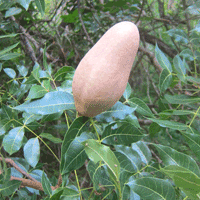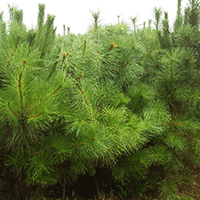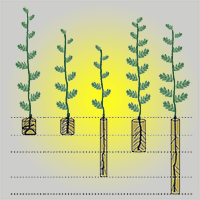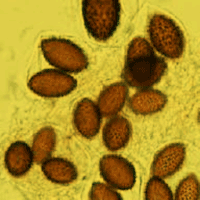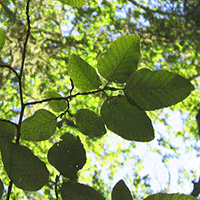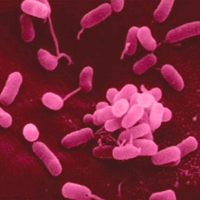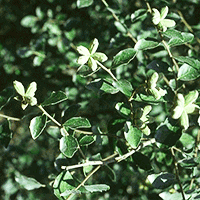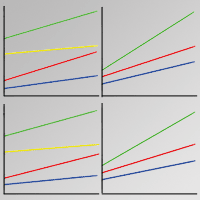
Forecasting the field performance of Austrian pine seedlings using morphological attributes
Vladan Ivetić (1) , Steven Grossnickle (2), Mirko Škorić (1)
iForest - Biogeosciences and Forestry, Volume 10, Issue 1, Pages 99-107 (2016)
doi: https://doi.org/10.3832/ifor1722-009
Published: Oct 13, 2016 - Copyright © 2016 SISEF
Research Articles
Abstract
This study examined whether the morphological attributes of Austrian pine (Pinus nigra ssp. nigra var. nigra Arnold) seedlings measured in the nursery could be used to forecast subsequent field performance over an extended time frame. Seedlings from three seed sources were produced in two types of containers and in bareroot seedbeds. These seedlings were measured for an array of morphological attributes (height, HT; root collar diameter, RCD; shoot height/diameter ratio, HD; shoot and root dry weight, SDW and RDW, respectively; shoot:root ratio, S:R; number of the first order lateral roots, FOLR; and Dickson quality index, DQI) and then planted at two sample plots with different soil depth. Seedling attributes were tested against field survival and growth in the first three years and growth in the twelfth year for their ability to forecast field performance. Correlations between morphological attributes and field performance were stronger for the plot with shallower soil, having potentially drier conditions. HT, HD, and S:R were the best attributes for forecasting seedling survival. HD was the most reliable attribute to forecast growth during the first three years after planting, defining the largest proportion of variation for growth (r2=0.36 to 0.86). Morphological attributes were better able to forecast field performance in the first three years at the shallow soil site, with FOLR the best single morphological variable. HT, DIA, and RDW were the best attributes to forecast growth during the first three years after planting on both sites. Morphological attributes were not able to forecast growth 12 years after planting.
Keywords
Seedling Quality, Seedling Performance, Reforestation, Pinus nigra
Authors’ Info
Authors’ address
Mirko Škorić
University of Belgrade, Faculty of Forestry, Kneza Viseslava 1, 11030 Belgrade (Serbia)
NurseryToForest Solutions, 1325 Readings Drive, Sidney V8L 5K7, British Columbia (Canada)
Corresponding author
Paper Info
Citation
Ivetić V, Grossnickle S, Škorić M (2016). Forecasting the field performance of Austrian pine seedlings using morphological attributes. iForest 10: 99-107. - doi: 10.3832/ifor1722-009
Academic Editor
Mike Perks
Paper history
Received: May 29, 2015
Accepted: Jun 20, 2016
First online: Oct 13, 2016
Publication Date: Feb 28, 2017
Publication Time: 3.83 months
Copyright Information
© SISEF - The Italian Society of Silviculture and Forest Ecology 2016
Open Access
This article is distributed under the terms of the Creative Commons Attribution-Non Commercial 4.0 International (https://creativecommons.org/licenses/by-nc/4.0/), which permits unrestricted use, distribution, and reproduction in any medium, provided you give appropriate credit to the original author(s) and the source, provide a link to the Creative Commons license, and indicate if changes were made.
Web Metrics
Breakdown by View Type
Article Usage
Total Article Views: 51259
(from publication date up to now)
Breakdown by View Type
HTML Page Views: 41941
Abstract Page Views: 3979
PDF Downloads: 3833
Citation/Reference Downloads: 52
XML Downloads: 1454
Web Metrics
Days since publication: 3366
Overall contacts: 51259
Avg. contacts per week: 106.60
Citation Metrics
Article Citations
Article citations are based on data periodically collected from the Clarivate Web of Science web site
(last update: Mar 2025)
Total number of cites (since 2017): 34
Average cites per year: 3.78
Publication Metrics
by Dimensions ©
Articles citing this article
List of the papers citing this article based on CrossRef Cited-by.
References
Comparative research of growth dynamics of Austrian pine (Pinus nigra Arn.) root system in the first year produced in the open and in the rigid containers. Bulletin of the Faculty of Forestry 73: 231-239. [in Serbian]
Gscholar
Seedling size and reforestation success. How big is big enough? In: “The thin green line: a symposium on the state-of-the-art in reforestation” (Colombo SJ ed). Forest Research Information Paper 160, Ontario Forest Research Institute, Ontario Ministry of Natural Resources, Sault Ste. Marie, Ontario, Canada, pp. 138-144.
Online | Gscholar
How the physiologist can improve the raising of container grown stock and its establishment. Research Note no. 81, Department of Reforestation, Royal College of Forestry, Stockholm, Sweden, pp. 12.
Gscholar
Reforestation in Serbia: success or failure? In: Proceedings of the International Conference “Reforestation Challenges” (Ivetić V, Stanković D eds). Belgrade (Serbia) 03-06 Jun 2015. Reforesta, Belgrade, Serbia, pp. 1-12.
Gscholar
Re-evaluating the significance of the first-order lateral root grading criterion for hardwood seedlings. In: Proceedings of “14th Central Hardwood Forest Conference”. General Technical Report NE-316, USDA Forest Service, North Central Forest Experimental Station, St. Paul, MN, USA, pp. 382-388.
Online | Gscholar
Frequency distributions of seedlings by first-order lateral roots: A phenotypic or genotypic expression. In: Proceedings of “31st Northeastern Forest Tree Improvement Conference” and the “6th Northcentral Tree Improvement Association” (Maurice E, Demerit Jr eds). University Park (PA, USA) 7-8 Jul 1988. Penn State University, PA, USA, pp. 181-187.
Gscholar
Reforestation success in central Mexico: Factors determining survival and early growth. Tree Planters’ Notes 53 (1): 16-22.
Gscholar
Conducting seedling stock type trials: a new approach to an old question. Journal of Forestry 109 (5): 293-299.
Gscholar
Assessing seedling quality. In: “Forest nursery manual: production of bareroot seedlings” (Duryea ML, Landis TD eds.). Martinus Nijhoff/Dr. W. Junk Publishers, The Hague, The Netherlands, pp. 243-266.
Gscholar
The target seedling concept. In: Proceedings of the Combined Meeting of the Western Forest Nursery Association Target Seedling Symposium (Rose R, Campbell SJ, Landis TD eds). Technical Report RM-200, USDA Forest Service, Fort Collins, CO, USA, pp. 1-8.
Online | Gscholar
Soil classification of Yugoslavia. ANUBiH, special edition - book LXXVIII, volume 13, Department for Natural and Mathematical Sciences, Sarajevo, Bosnia and Herzegovina, pp. 1-72.
Gscholar
Growing the “best” seedling for reforestation success. Forestry Departmental Series No. 12. Alabama Agricultural Experiment Station, AL, USA, pp. 11.
Gscholar
Seedling production of forest and decorative trees and shrubs. University of Belgrade, University book press, Belgrade, Serbia, pp. 455. [In Serbian]
Gscholar
Seedling morphological evaluation: what you can tell by looking. In: “Evaluating seedling quality: principles, procedures, and predictive ability of major tests” (Duryea ML ed). Forest Research Laboratory, Oregon State University, Corvallis, OR, USA, pp. 59-72.
Gscholar

